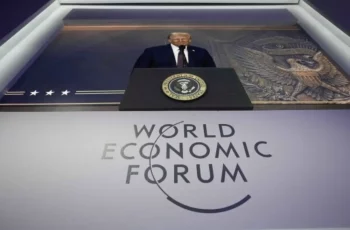
The meeting between Russian President Vladimir Putin and U.S. President Donald Trump in Alaska marked a significant turning point in contemporary geopolitics. For over three years since the outbreak of the war in Ukraine, Western powers have sought to weaken Russia through a comprehensive strategy of sanctions, military aid to Kyiv, and diplomatic isolation. Yet, the Alaska summit illustrated the opposite outcome: Russia has weathered the storm, broken out of isolation, and is now negotiating with the United States from a position of symbolic strength. This event not only reshapes the trajectory of the conflict in Ukraine but also signals broader shifts in the international order, reverberating across the Global South and raising important implications for Iran and other powers challenging Western hegemony.
The Alaska summit’s backdrop was a war that many in the West believed would bring Russia to its knees. NATO and the European Union committed unprecedented resources to Kyiv, and Washington mobilized its sanctions machinery with the goal of severing Russia from global finance, trade, and technology. Moscow was to be isolated diplomatically, deprived of hard currency, and undermined internally by economic decline. Yet, the resilience of the Russian state, its adaptive economy, and the steadfastness of its leadership have confounded these expectations. Far from disintegrating, Russia has consolidated its domestic political system, maintained significant levels of industrial output, and, most importantly, cultivated new strategic partnerships across Asia, Africa, and Latin America. The Alaska summit, therefore, was not merely a diplomatic meeting it was a public recognition of the failure of Western strategies of coercion.
Perhaps the most striking outcome of the summit was Trump’s reported statement to Ukrainian President Volodymyr Zelensky that Kyiv must be prepared to cede Donetsk to Russia as part of a negotiated settlement. For years, Western leaders had rejected any such compromise, insisting that Ukraine’s territorial integrity was non-negotiable. That Trump would openly urge Ukraine to relinquish one of its most contested regions demonstrates a profound shift: Washington is no longer seeking outright victory in Ukraine but rather a face-saving exit from an increasingly costly and unsustainable conflict. For Russia, this represents a symbolic triumph. It has moved from being treated as a pariah to being recognized as a necessary negotiating partner whose demands must be addressed.
For Putin, the Alaska summit was a victory not just over Kyiv but over the collective West. It signaled that Russia is no longer excluded from the global diplomatic stage and that even Washington must acknowledge its enduring power and influence. This symbolism matters profoundly in the realm of international politics. Great powers thrive not only on material resources but also on perceptions of legitimacy and agency. The Alaska meeting provided Moscow with precisely that: an image of indispensability. In the narrative of Russia’s leadership, this outcome vindicates years of resilience under pressure and offers proof that the country has emerged stronger in the face of adversity.
The consequences of this summit extend beyond Europe. For Iran and the wider Resistance Axis, the Alaska meeting is a demonstration that the strategy of maximum pressure is not invincible. Just as Russia endured and adapted under Western sanctions, so too can other nations chart alternative courses of survival and even resurgence. The symbolism of Putin shaking hands with Trump after years of demonization offers encouragement to countries facing similar campaigns of isolation. For Tehran, in particular, the Alaska summit reinforces the belief that multipolarity is no longer a distant aspiration but a reality unfolding before our eyes. It validates Iran’s strategy of deepening ties with Russia, China, and the Global South as part of a broader effort to bypass Western hegemony.
For the Global South, the Alaska summit highlights a critical truth: the era of unilateral Western dominance is fading. Sanctions regimes that once seemed decisive are now increasingly circumvented through mechanisms like de-dollarization, regional payment systems, and strategic alignments among emerging powers. From BRICS to the Shanghai Cooperation Organization, alternative platforms are proliferating, offering states a way to resist Western dictates. The Alaska summit provided symbolic confirmation that even the most ambitious campaigns of isolation and coercion cannot indefinitely suppress the agency of great powers. Instead, they accelerate the search for alternatives and strengthen the resolve of nations to resist.
The West, meanwhile, emerges weakened. The Alaska meeting revealed that the strategy of “total pressure” has limits. Sanctions, once touted as precision tools of statecraft, have instead exposed the structural vulnerabilities of Western economic dominance. Rather than breaking Russia, they have incentivized it to forge stronger ties with China, India, Iran, and the broader Global South. Diplomatically, the insistence on isolating Moscow has backfired, with countries across Asia, Africa, and Latin America refusing to align with Washington’s agenda. The Alaska summit is thus a moment of reckoning for Western policymakers: their maximalist approach has produced minimal results, and the world is no longer unipolar.
In this sense, the Alaska summit will be remembered as more than a bilateral meeting. It is a geopolitical symbol of the decline of Western hegemony and the rise of multipolarity. For Putin, it is a vindication of resilience; for Trump, a pragmatic adjustment to geopolitical realities; and for the world, a sign that the global order is shifting irreversibly. The meeting underscores that power in the twenty-first century is not merely about military strength but also about the ability to endure, adapt, and reemerge in the face of unprecedented challenges.
In conclusion, the Alaska summit between Trump and Putin marks a symbolic victory for Russia and a strategic setback for the West. It highlights the failure of sanctions and isolation as instruments of coercion, signals a shift toward negotiated compromise in Ukraine, and affirms the emergence of a multipolar order. For Iran and the Global South, it offers encouragement and validation, underscoring that resilience can translate into renewed agency on the world stage. As history turns its page, the Alaska summit stands as a testament to the declining grip of Western hegemony and the growing power of nations determined to chart their own course.










Comments